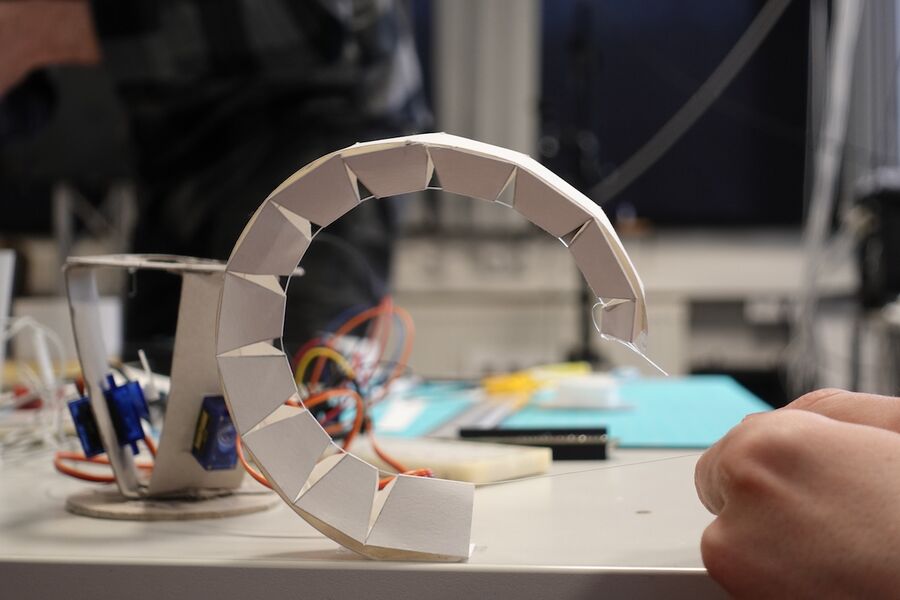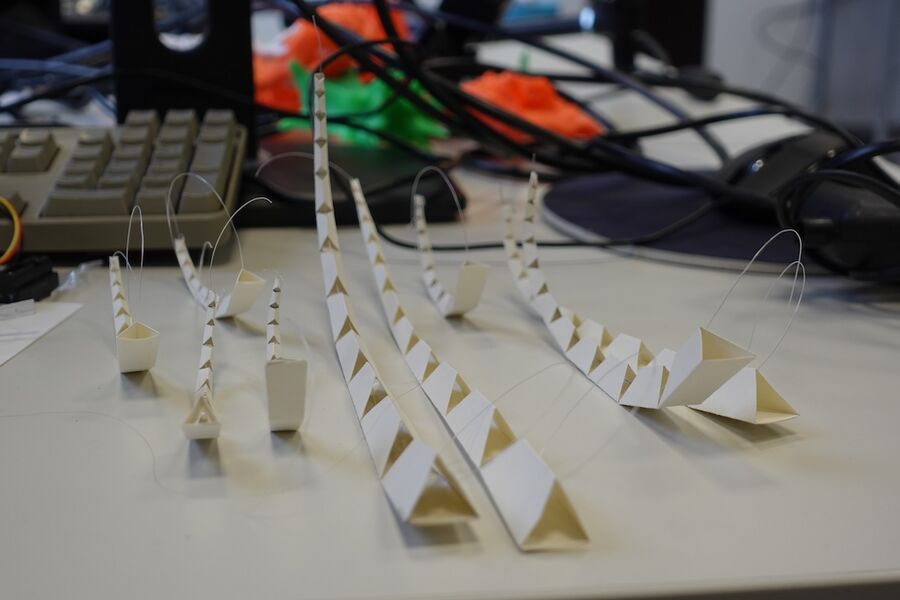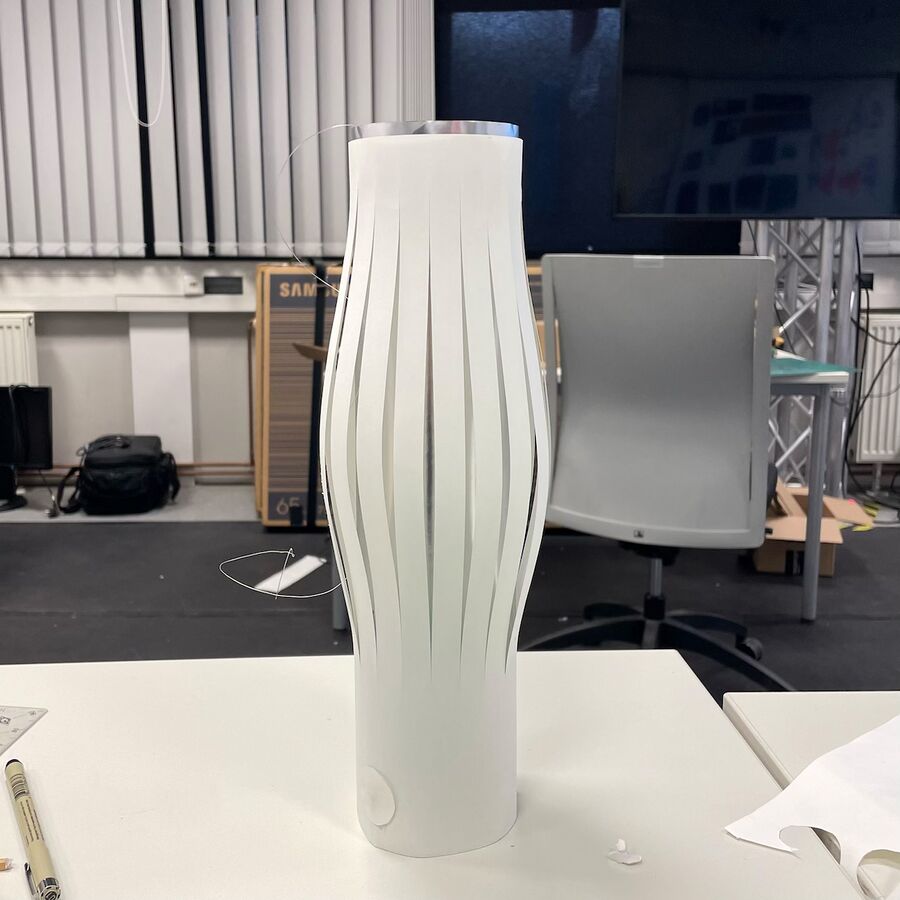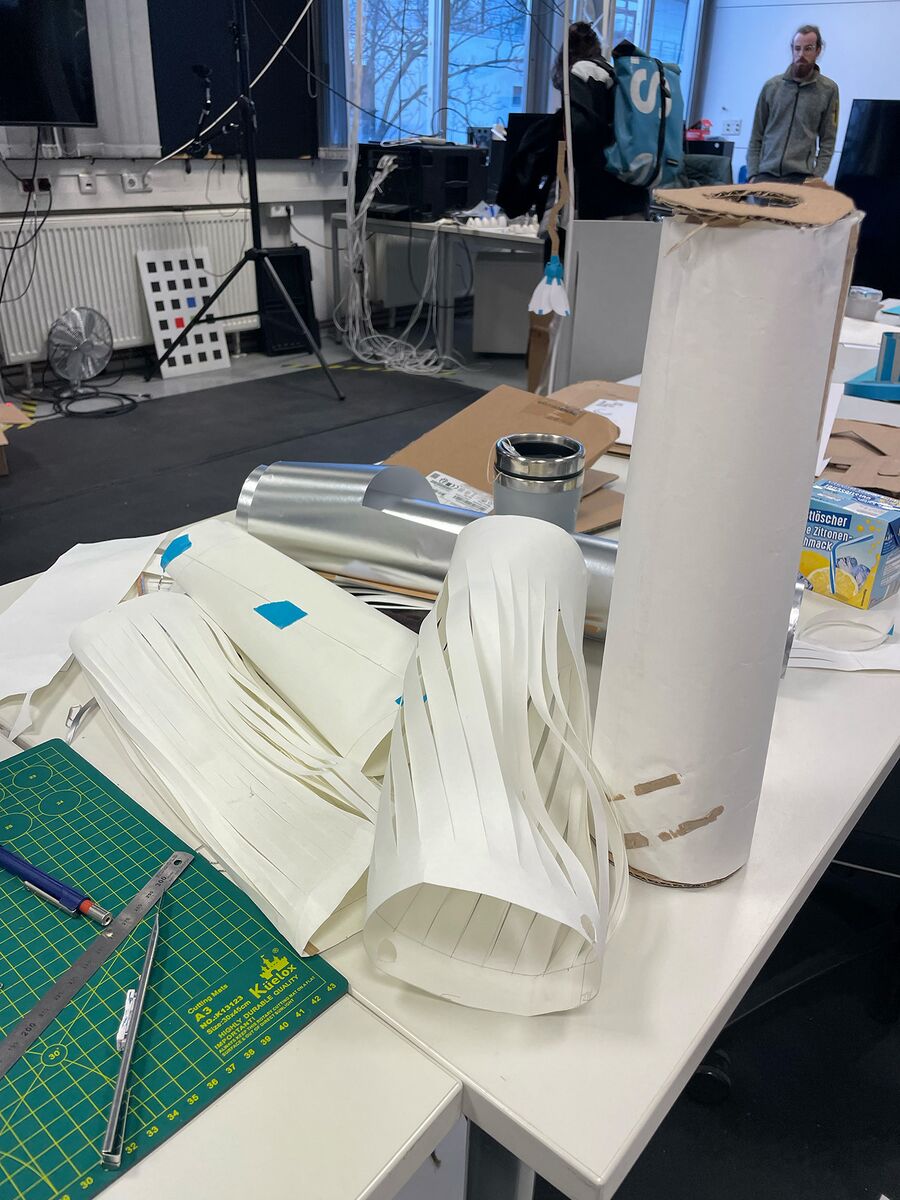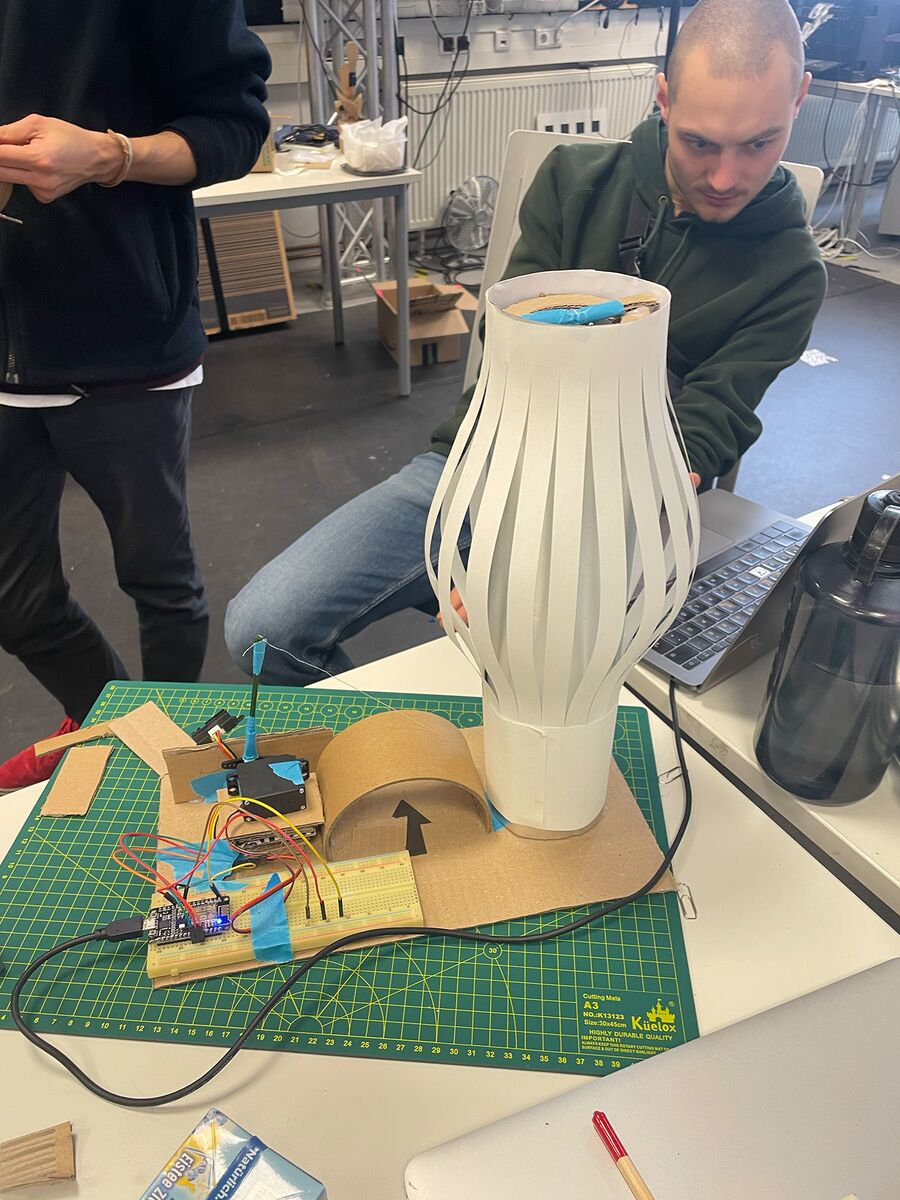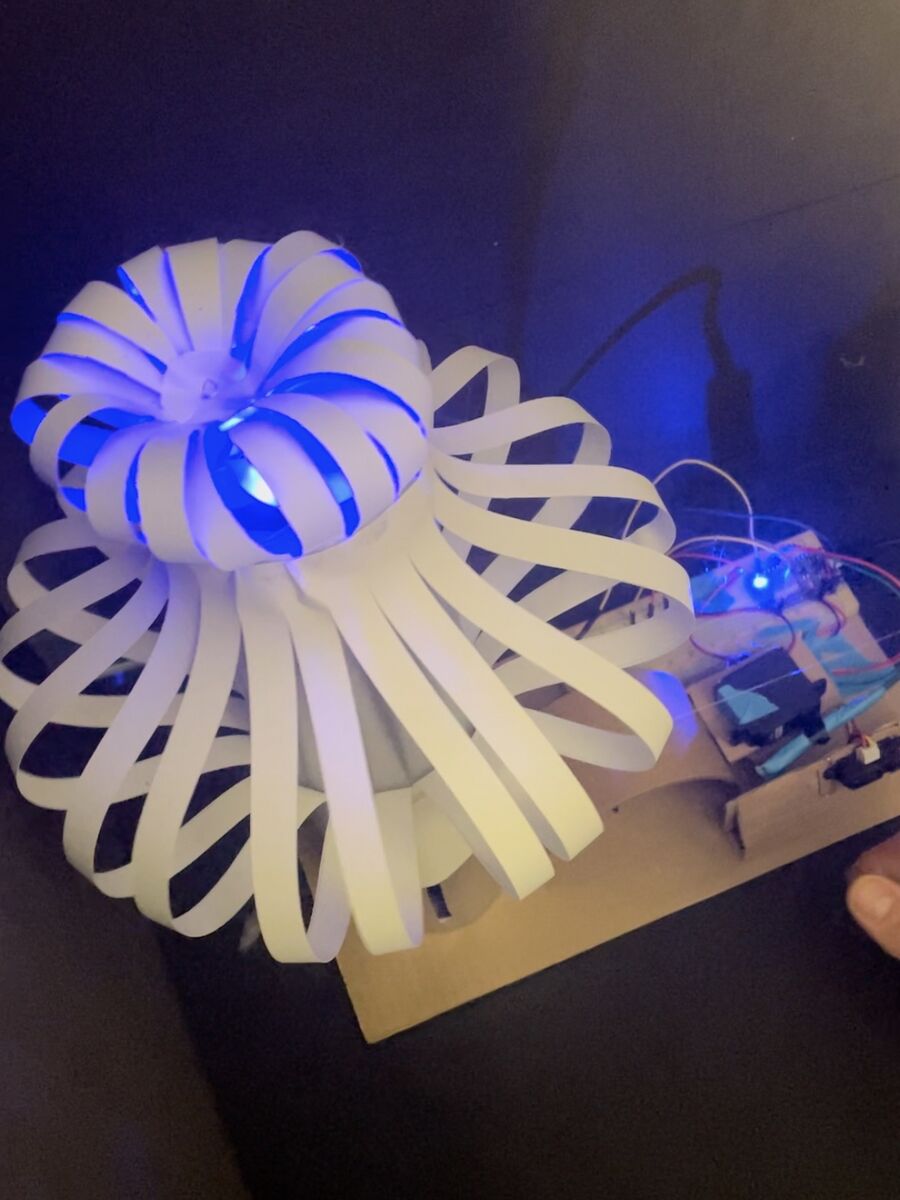Arduino Workshop with Lukas Flory: Difference between revisions
No edit summary |
No edit summary |
||
| Line 22: | Line 22: | ||
Sensorics in use: | Sensorics in use: | ||
Description: | Description: | ||
[[File:NikSin.jpg|class=half-width grayscale|upright=3.0|frameless]] | [[File:NikSin.jpg|class=half-width grayscale|upright=3.0|frameless]] | ||
| Line 32: | Line 32: | ||
Sensorics in use: IR Infrared Obstacle Detection Distance Sensor | Sensorics in use: IR Infrared Obstacle Detection Distance Sensor | ||
Description: | Description: The model was designed to mimic the growth mechanism of an oyster mushroom. By using an infrared distance sensor, the "mushroom" responds to proximity; as you approach, the fungi appear to "grow." This effect is achieved by a string mechanism that lifts a paper structure with linear ridges, simulating the natural expansion of a mushroom. On top of the mushroom, there is a light that operates on the same mechanism. It illuminates as you move closer to it. | ||
[[File:Mushroom1.jpg|class=half-width grayscale|upright=3.0|frameless]] | [[File:Mushroom1.jpg|class=half-width grayscale|upright=3.0|frameless]] | ||
Revision as of 20:33, 11 June 2024
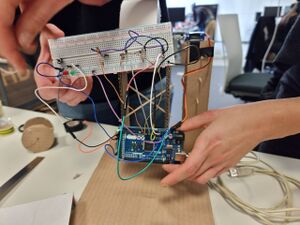
In January, we had a workshop led by Lukas Flory, which provided us with an invaluable opportunity to delve into the realm of Arduino technology and sensorics. Throughout the workshop, we gained insights into the versatile applications of Arduino and explored various sensoric capabilities inherent in the device.
Under Lukas Flory's guidance, we embarked on a journey of creative exploration, conceiving and crafting our own unique Flora-inspired mechanisms. Drawing inspiration from the intricate functionalities of Flora's sensorics, we meticulously designed models that mirrored the essence and attributes of Flora.
Technology, sensorics, product design, and coding
Beyond the realm of mere ideation, the workshop facilitated hands-on experience in product design and prototyping. Participants delved into the intricacies of building physical models, gaining practical skills that bridged the conceptual with the tangible.
Furthermore, the workshop provided a comprehensive introduction to Arduino coding, specifically utilizing the NodeMcu ESP8266 model. This equipped participants with the essential knowledge and skills to program and control their creations effectively. Through practical exercises and demonstrations, attendees grasped the fundamentals of Arduino programming, laying a solid foundation for future projects and endeavors.
Overall, the workshop served as a catalyst for innovation, fostering a collaborative environment where creativity flourished, and participants emerged with newfound expertise in Arduino technology, sensorics, product design, and coding.
Below, you will find a showcase of all the projects that emerged from the workshop. This includes photos capturing the creative process and videos showcasing the final products.
Henri die fleischfressende Pflanze
Sensorics in use:
Description:
Bloom the Mushroom Lamp
Sensorics in use: IR Infrared Obstacle Detection Distance Sensor
Description: The model was designed to mimic the growth mechanism of an oyster mushroom. By using an infrared distance sensor, the "mushroom" responds to proximity; as you approach, the fungi appear to "grow." This effect is achieved by a string mechanism that lifts a paper structure with linear ridges, simulating the natural expansion of a mushroom. On top of the mushroom, there is a light that operates on the same mechanism. It illuminates as you move closer to it.
Doch Keine Siebträgermaschine
Sensorics in use:
Description:
Giesella
Sensorics in use:
Description:
Dornen Pflanze
Sensorics in use:
Description:
